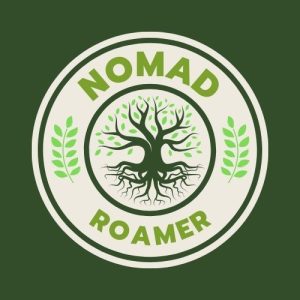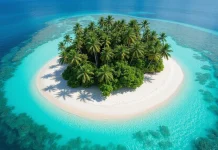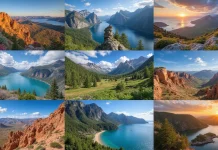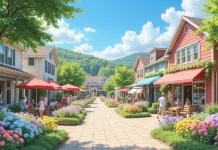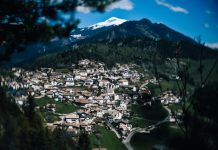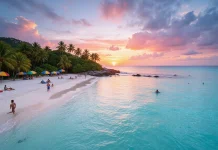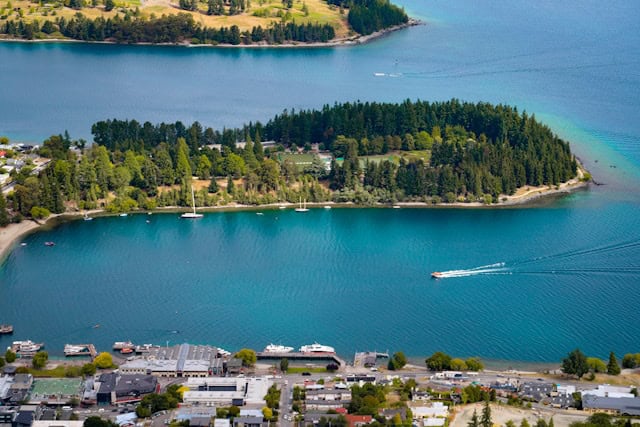Exploring French Wine Regions: Vineyards and Varietals
Bordeaux: The Epitome of French Wine Excellence
Understanding Bordeaux’s Unique Terroir
Bordeaux, located in the southwest of France, is synonymous with luxury wine. The region enjoys a moderate maritime climate, with the Atlantic Ocean to the west and the Gironde estuary playing crucial roles in regulating temperatures. This unique terroir results in an ideal environment for winemaking. The soil composition varies from limestone, clay, and gravel, allowing for a diverse array of wine varietals.
Notable Bordeaux Varietals and Appellations
Bordeaux wines are predominantly blends, with Cabernet Sauvignon, Merlot, and Cabernet Franc as the main grape varietals for reds. Each sub-region, including the Left Bank and Right Bank, has its own unique offerings. The Left Bank is famous for producing robust, tannic wines, primarily from Cabernet Sauvignon, while the Merlot-dominated Right Bank is known for its softer, fruit-forward wines. Notable appellations include Médoc, Saint-Émilion, and Pomerol.
Exploring Bordeaux's Iconic Châteaux
Visiting Bordeaux is a trip through historical wineries known as châteaux. Legendary names like Château Margaux, Château Lafite Rothschild, and Château Cheval Blanc offer tours that provide insights into their winemaking processes, often concluding with sumptuous tastings. Each château has its own intriguing history and unique approach to crafting fine wines.
Burgundy: A Celebration of Single Varietals
The Essence of Burgundy's Terroir
Burgundy, located in eastern France, is revered for its focus on terroir, where a vineyard’s specific location plays a pivotal role in the character of the wine. The region's climate is continental, with hot summers and cold winters, providing a challenging but rewarding environment for viticulture. The soil is primarily limestone, which is ideal for both Pinot Noir and Chardonnay.
Key Burgundy Grape Varietals
Unlike Bordeaux, Burgundy specializes in single varietals, predominantly Pinot Noir for reds and Chardonnay for whites. These grapes express the subtle nuances of the region's distinct terroir, resulting in wines with exceptional depth and complexity. Key appellations such as Côte de Nuits and Côte de Beaune contribute significantly to the region’s reputation.
Visiting Burgundy's Historic Vineyards
Burgundy is peppered with small, family-owned vineyards, emphasizing tradition and craftsmanship. Premier crus and grand crus, like those in the acclaimed village of Vosne-Romanée, offer intimate vineyard tours and tastings where visitors can experience the dedication in every bottle. The practice of biodynamics and organic farming is increasingly evident in these forward-thinking properties.
Champagne: The Icon of Celebration
Champagne's Distinctive Terroir and Climate
Nestled in the northeastern part of France, Champagne is world-renowned for its sparkling wines. The region's chalky soils and cool climate create the perfect conditions for producing exceptionally crisp and lively wines. The gentle slopes in regions like Montagne de Reims are ideal for growing grapes that are pressed with precision.
Grape Varietals Unique to Champagne
The primary grape varietals used in Champagne production are Chardonnay, Pinot Noir, and Pinot Meunier. Chardonnay offers finesse and elegance, while Pinot Noir brings structure and depth, and Pinot Meunier adds fruitiness. These varietals are often blended to achieve the balance and complexity mothered in every bottle of Champagne.
Exploring the Champagne Houses
The storied Champagne houses, such as Moët & Chandon, Veuve Clicquot, and Dom Pérignon, offer luxurious experiences. Visitors can tour intricate cellars and partake in vertical tastings that showcase the evolution of vintages. Each house tells its own captivating story, intertwined with the history of this iconic beverage.
Alsace: A Fusion of French and German Influence
The Unique Terroir of Alsace
Bordering Germany, Alsace is recognized for its distinct continental climate, resulting in hot, dry summers and cold winters. The region's geological diversity, characterized by granite, limestone, and sandstone soils, contributes to the vast array of expressive wines.
Signature Alsatian Varietals
Alsace is famed for its aromatic white varietals, including Riesling, Gewurztraminer, and Pinot Gris. Riesling from Alsace is particularly noteworthy, offering dry, mineral-laden wines with high acidity that age gracefully. The region’s ability to produce such elegant wines is a testament to its strong Germanic influences and unique terroir.
Discovering Alsace's Wine Route
The Alsatian Wine Route is a picturesque journey through charming villages, lined with half-timbered houses and tranquil vineyards. Wineries along this route, often small family operations, warmly welcome visitors to experience their wines. It's a region where tradition meets innovation, and the influence of neighboring Germany is tastefully evident.
Loire Valley: The Land of Diversity
The Loire Valley's Varied Terroir
Stretching from the Atlantic Ocean through central France, the Loire Valley is known for its varied climate and terroir, making it one of the most diversified wine-producing regions. The soil types range from limestone and slate to sand and gravel, each influencing the wine character distinctly.
Diverse Loire Valley Varietals
With over 60 appellations, the Loire Valley produces a wide range of wine styles. Sauvignon Blanc, famous in Sancerre and Pouilly-Fumé, produces wines with bright acidity and crisp flavors. Chenin Blanc from Vouvray offers versatility, crafting wines from dry to dessert-level sweetness. For reds, Cabernet Franc reigns in Chinon and Bourgueil, renowned for its earthy, herbal notes.
Embarking on the Loire Valley Wine Trail
The Loire Valley’s stunning châteaux double as wine estates, presenting an exquisite blend of history and wine exploration. Estates like Château de Chambord and Château de Chenonceau provide a dramatic backdrop for tastings of the region's diverse wines. It's a journey through time and taste, reflective of the Loire's historical significance.
Rhône Valley: The Blend Masters
The Rhône Valley's Diverse Terroir
Rhône Valley wines benefit from a range of climates, from the continental climate in the north to the Mediterranean climate in the south. The northern Rhône is dominated by steep granitic slopes, ideal for Syrah, while the southern Rhône's diverse terroir hosts a variety of grape varietals across its pebbly, alluvial soils.
Iconic Rhône Valley Varietals and Blends
The northern Rhône is renowned for Syrah, producing powerful, peppery red wines, particularly from appellations like Côte-Rôtie and Hermitage. In contrast, the southern Rhône is famous for its blends, such as the Grenache-based Châteauneuf-du-Pape, which often includes up to 13 varietals, adding complexity and depth to these wines.
Experiencing Rhône Valley's Winemaking Traditions
Visiting the Rhône Valley offers a deep dive into its diverse winemaking heritage. Wineries range from small, family-run operations to larger, legendary estates. Tastings here highlight the innovative blend tradition, while vineyard tours often detail the rich history and geography that shape these exceptional wines.
Provence: The Heart of Rosé
Provence's Mediterranean Climate
Nestled in the southeastern corner of France, Provence is bathed in sunshine and tempered by the Mediterranean Sea, creating a warm climate perfect for viticulture. The region's diverse soils, ranging from limestone to clay and sand, further enhance the complexity of wines produced here.
The Signature Rosé of Provence
Provence is the birthplace of rosé, a style emblematic of the region's laid-back lifestyle. Predominantly made from Grenache, Cinsault, and Mourvèdre, Provençal rosé is celebrated for its pale pink hue and refreshing qualities, boasting flavors of strawberries, herbs, and a hint of minerality.
Exploring Provençal Vineyards
A visit to Provence's vineyards offers more than just wine tastings; it's an exploration into the heart of French culture. Estate visits, such as Château Miraval or Domaines Ott, include walking tours through picturesque lavender fields and olive groves, culminating in tastings of the region's celebrated rosés and robust reds.
Languedoc-Roussillon: France’s Hidden Gem
Languedoc-Roussillon's Terroir Characteristics
As one of the largest wine-producing regions in France, Languedoc-Roussillon enjoys a Mediterranean climate with diverse soils, including limestone, shale, and clay. This diversity allows for a vast array of wine styles and varietals, making it a fascinating region for exploration.
Popular Languedoc-Roussillon Varietals
The region is celebrated for a variety of red and white wines, with popular varietals including Grenache, Syrah, and Carignan for reds, and Chardonnay and Viognier for whites. These wines are often bold and aromatic, reflecting the Mediterranean warmth and sunshine.
Visiting the Vineyards of Languedoc-Roussillon
Vineyard visits in Languedoc-Roussillon reveal a blend of ancient winemaking traditions and modern practices. Many estates offer opportunities to taste wines that are not only affordable but also rival premium wines in quality. The laid-back atmosphere provides a relaxed setting to enjoy these hidden gems.
The Diversity and Richness of French Wine Regions
The Spectrum of French Wine Styles
From the celebrated Bordeaux blends to the refined single varietals of Burgundy, the effervescent specialties of Champagne, and the aromatic whites of Alsace, French wine regions offer an unparalleled diversity that caters to all preferences. The country’s viticultural landscape is a testament to centuries of tradition and experimentation, continually setting the benchmark for global wine production.
Preservation and Innovation in French Viticulture
While the appreciation for traditional methods remains strong, French winemakers are also embracing innovation. The rise of organic and biodynamic farming, the use of technology in vineyard management, and the experimentation with lesser-known varietals all reflect a progressive approach that ensures the long-term sustainability and dynamism of French wine regions.
Engaging with the French Wine Experience
Exploring French wine regions is more than just a journey through landscapes; it's an immersion into the fabric of French culture, history, and passion. Whether you're a novice or a seasoned oenophile, France's regions offer a wealth of experiences and adventures, inviting you to savor and understand the complexities that define each glass of wine.
